You may not find this terribly rewarding unless you're included here, so this is a good time for casual and random browsers to turn back before they get too caught up in the sweep and majesty of the proceedings and can't let go.
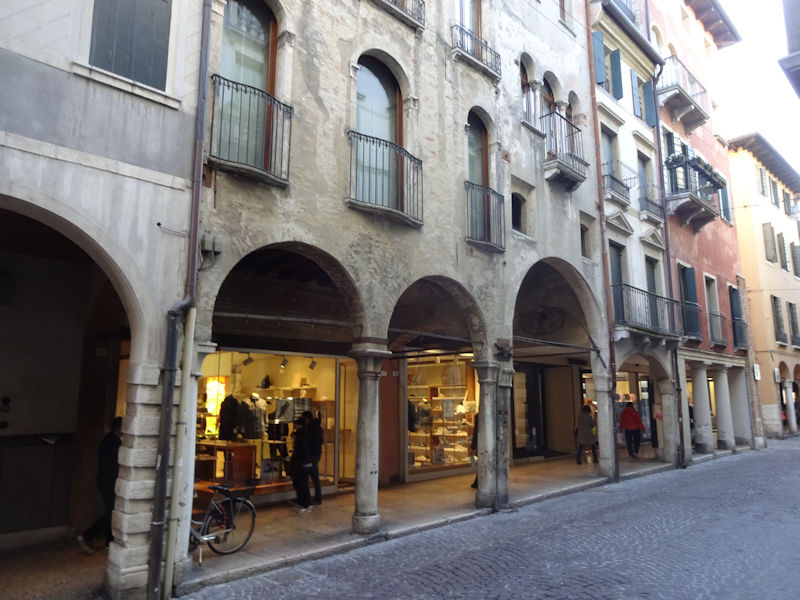
We're in the middle of a brisk walk around Treviso, in the Italian Veneto region, 1 March 2017, having already paced through the civic picture gallery in the St Catherine's church and wandered about in the old town around the Piazza dei Signoria. This is the Via Calmaggiore wending northward towards the Duomo.
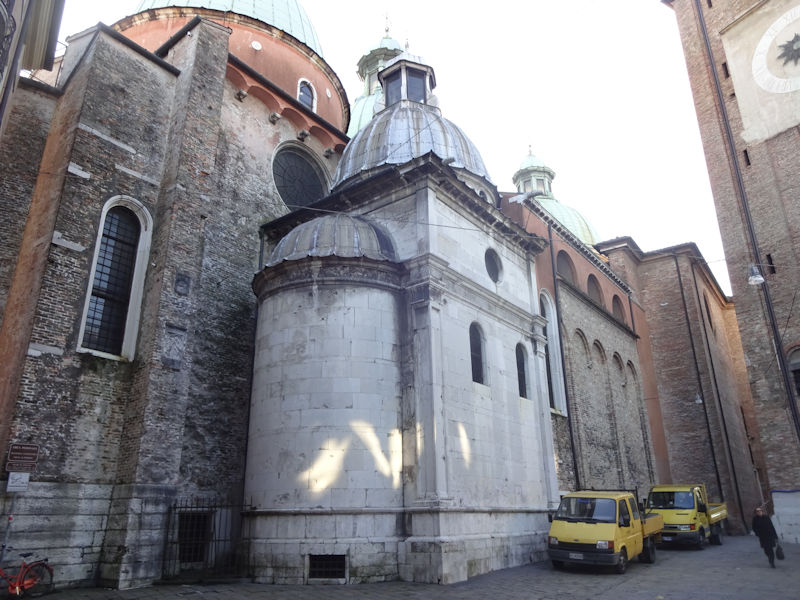
The back end of the Duomo . . .

. . . and the Duomo's bell tower alongside it.
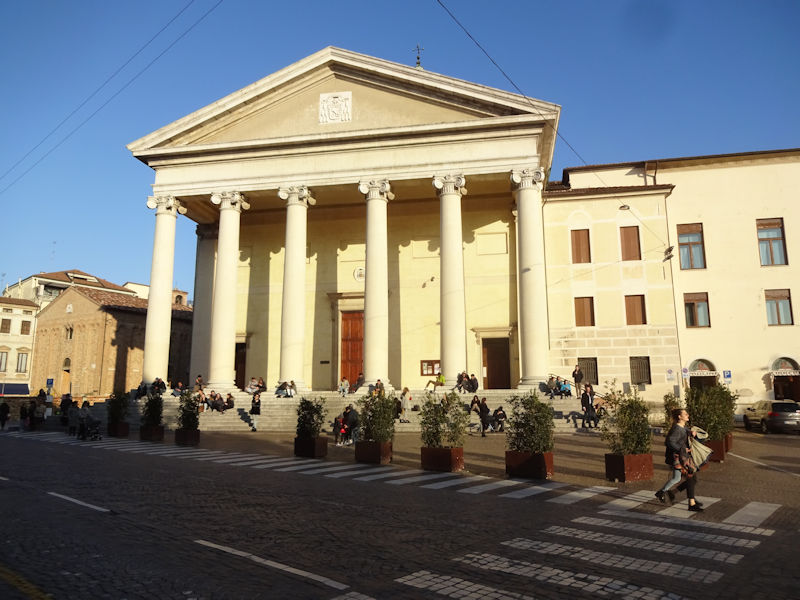
The uninteresting neo-classical portico and façade of the Cattedrale di San Pietro Apostolo, or Duomo di Treviso, which replaced a 6th century church built on top of a Roman temple, remodeled as a Romanesque building in the 11th and 12th centuries, and knocked down in 1768. This is the subsequent result; the portentously bland façade dates from 1836, and more repairs were made after the Allies' 'Good Friday' bombing raids of 7 June 1944.

The more interesting Baptistery of St John (Battistero di San Giovanni) derives from a 1222 restoration of an earlier building following an earthquake and has been remodeled since then in the 16th, 19th, and early 20th centuries. Works are going on there presently and we couldn't get in.

We collect pictures of Kristin with her hand in a lion's mouth.
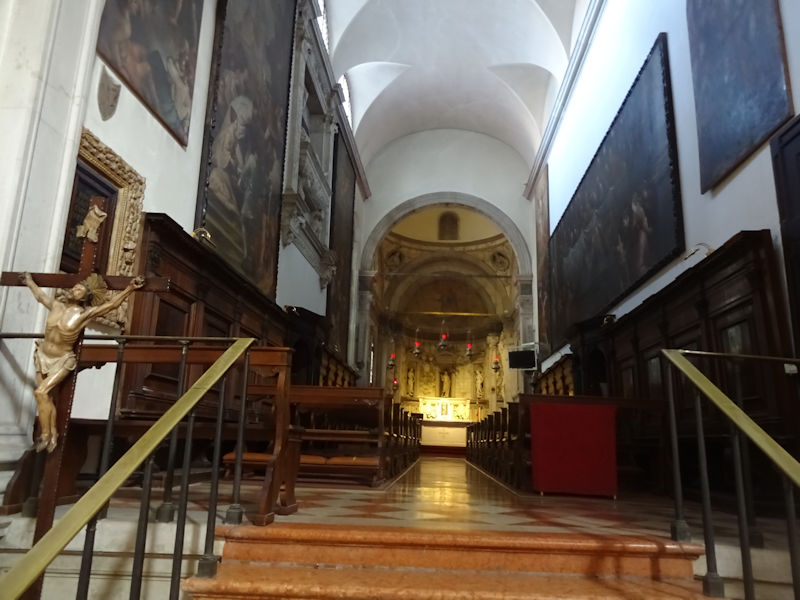
The main floor of the cathedral -- the real fun in this place is downstairs.
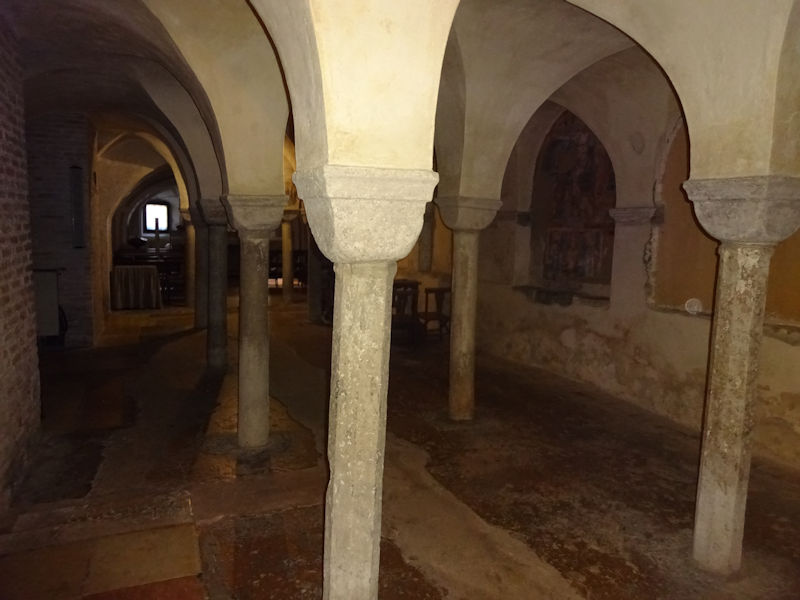
Only the crypt survives from the Duomo's much earlier incarnations, and it's worth the visit.
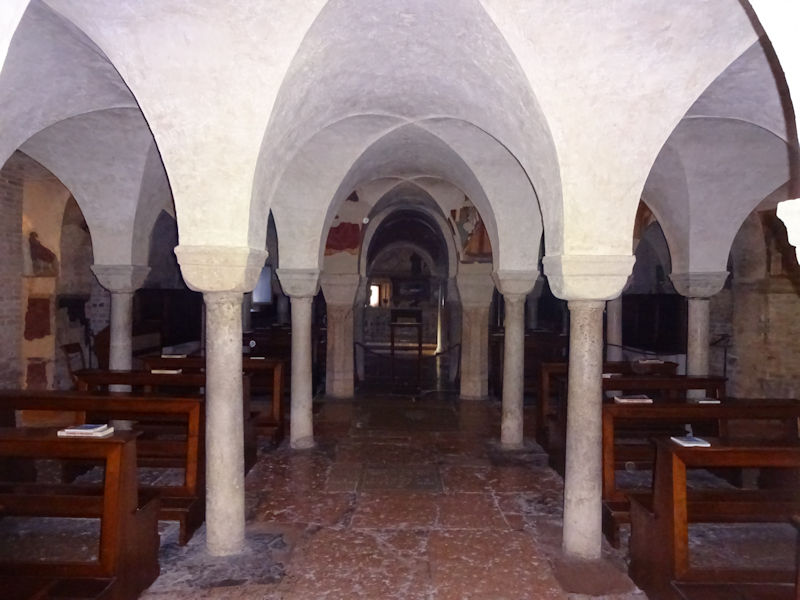
The crypt under the altar and apse of the cathedral dates from at least the 12th century and probably earlier.
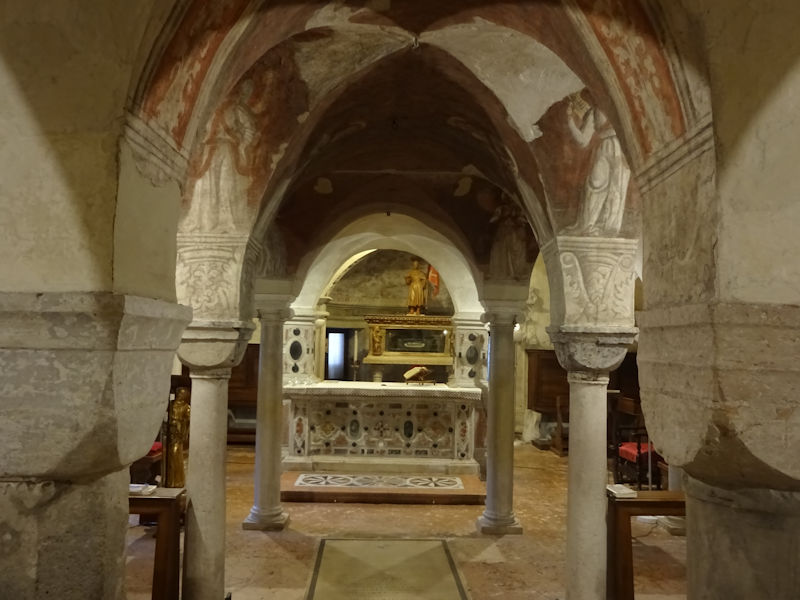
Approaching the altar, with its wonders

The relics of San Liberale, right here. St Liberalis of Treviso, supposedly a 4th century priest from Altinum, an ancient city on the northern Venetian lagoons, was venerated for apparently no discernible reason, other than that he hated the Arian 'heretics'. He is the patron saint of Treviso, where his remains had been transported to save them from either Huns or Lombards, and was stuck on as patron of Castelfranco as well when the Trevisans created that fortress ca. 1199.
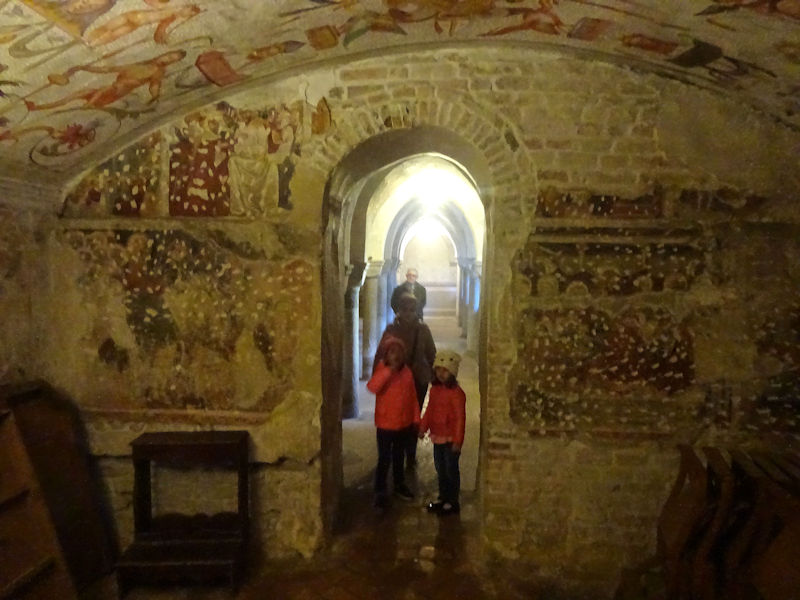
A tiny something-or-other room near the altar, with awed spectators

Leaving the crypt
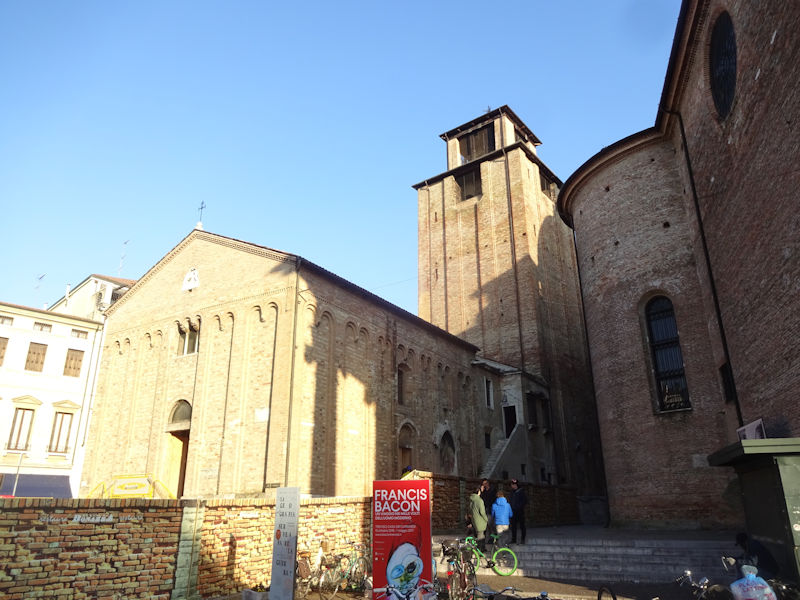
The cathedral's bell tower or campanile is said to be unfinished because of the Venetians' intervention to prevent its rising higher than the Basilica of St Mark in Venice.
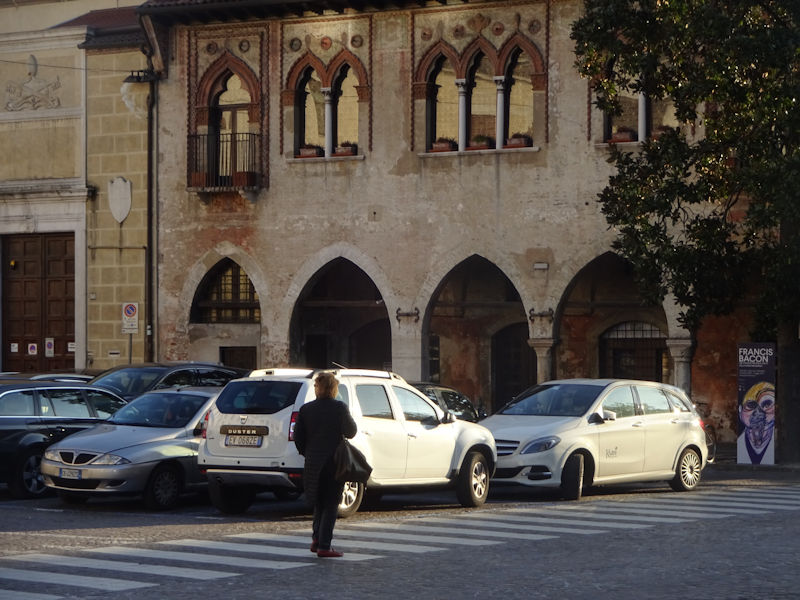
Farther along the Piazza Duomo, searching for . . .

. . . the local Conad City (beer, wine, and healthy snacks); but this isn't it.

The Torre degli Oliva (first built in 1200) in the Via Paris Bordone, behind the Cathedral, from the little Piazza Pola

Street scene

Back to the Piazza Indipendenza by the Palazzo dei Trecento, and walking southward through town
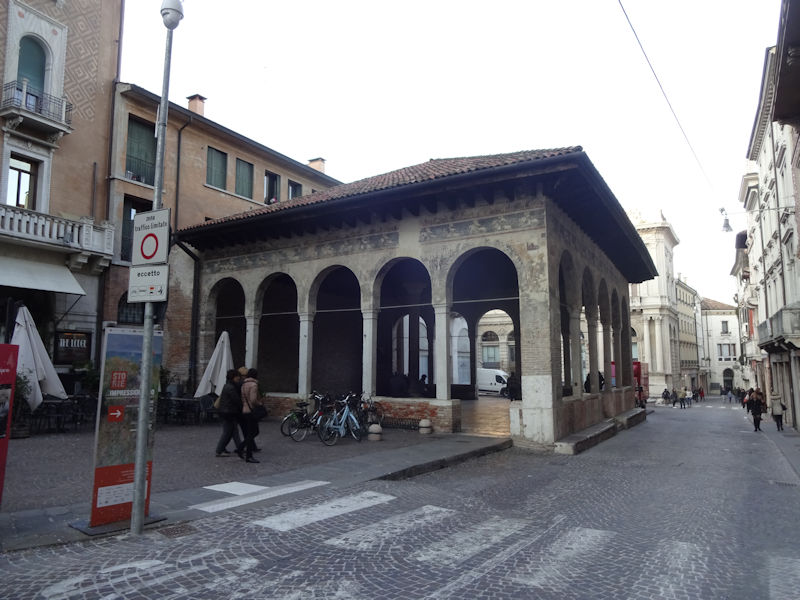
The Loggia dei Cavalieri, built under the podestà Andrea da Perugia (1276) as a place for meetings, talks and games, reserved for fine-weather relaxation of the upper classes, a role that ended when the Venetians came in in 1388. It decayed thereafter and was used as a timber yard, storage depot for barrels in the 17th century, and a coffin shop in the 19th. It was restored by the city in 1911 and again after . . .
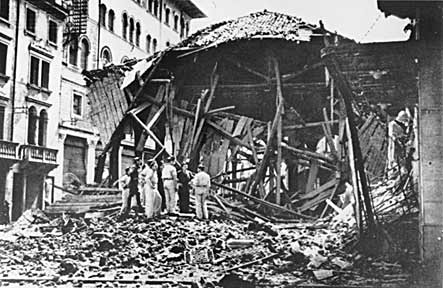
. . . Allied bombers got through with it in May 1944 (source https://www.trevisoinfo.com/loggiadeicavalieri.htm).
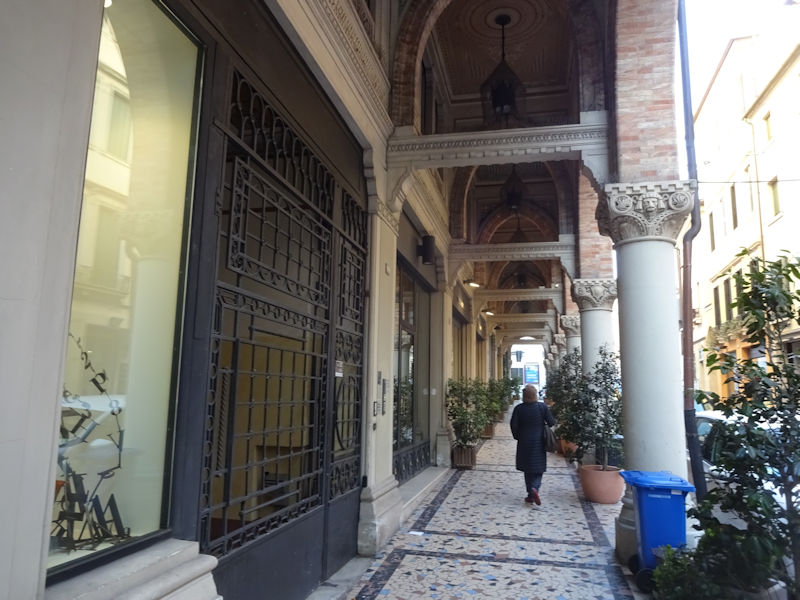
A lovely walk down the Via Santa Margherita to the river
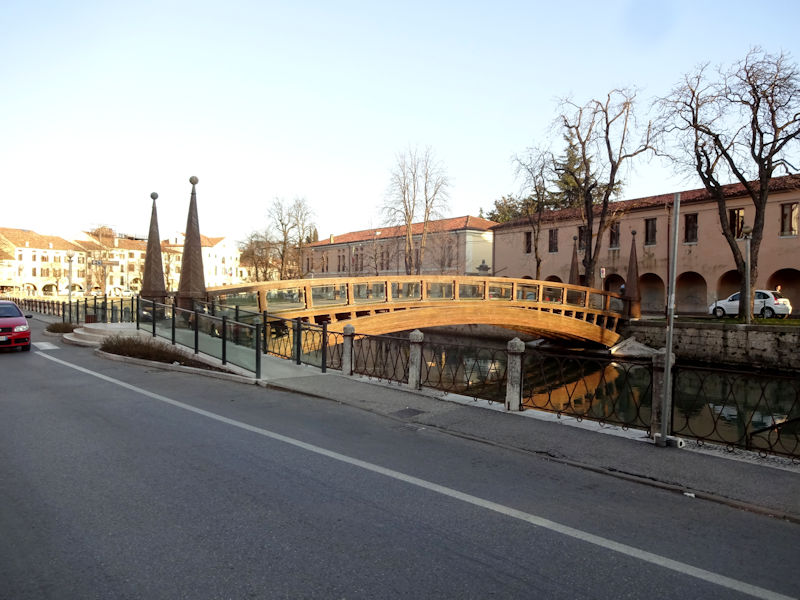
The river Sile running through the south of the city, with an island on the far side and, beyond another branch of the river, the main rail station
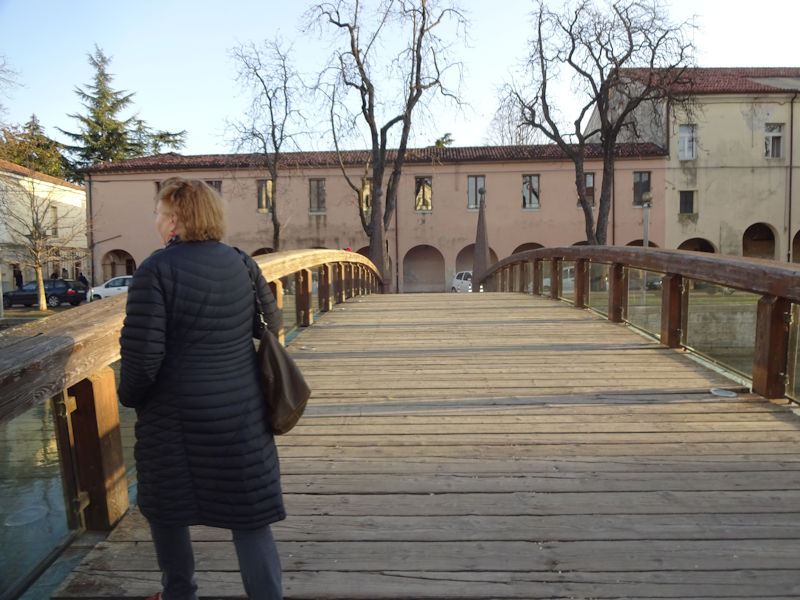
On the footbridge connecting the Riviera Garibaldi with the Riviera Santa Margherita on the far side

Farther along the Riviera Garibaldi towards the Dante bridge, formerly the site of boat-building and offloading cargo boats from down the river

The outflow of the Canale Buranelli

Crossing the Ponte Dante at the bend in the river Sile -- the Locanda Ponte Dante and its Osteria are in a 14th century building.
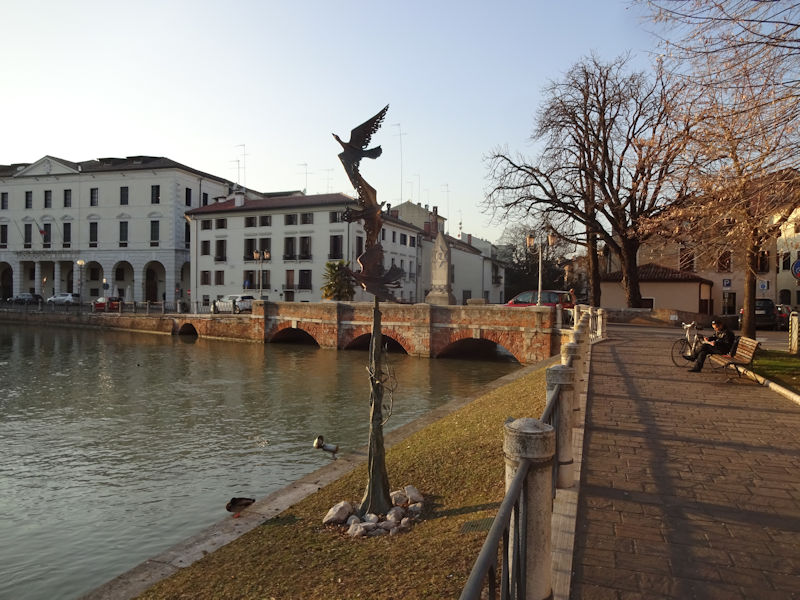
The Ponte Dante was so named in the 1860s in honor of Dante's laudatory mention in the Paradiso of the place where the different-colored waters of the Cagnan Grande and the Sile mingle.

Southward along the river, with most of the university district on the far side
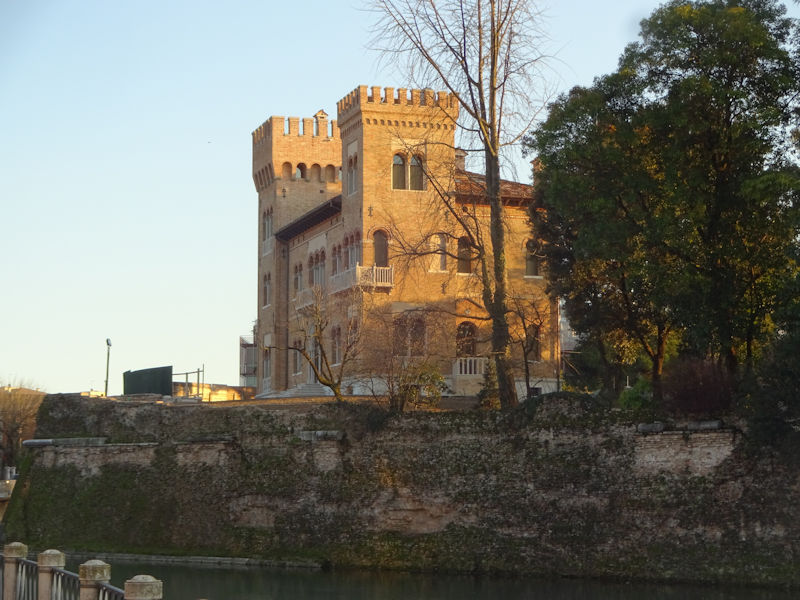
The military Bastion of St Sofia at the confluence of the branches of the Sile, built by the Venetians in the early 16th century to fend off the armies of the League of Cambrai
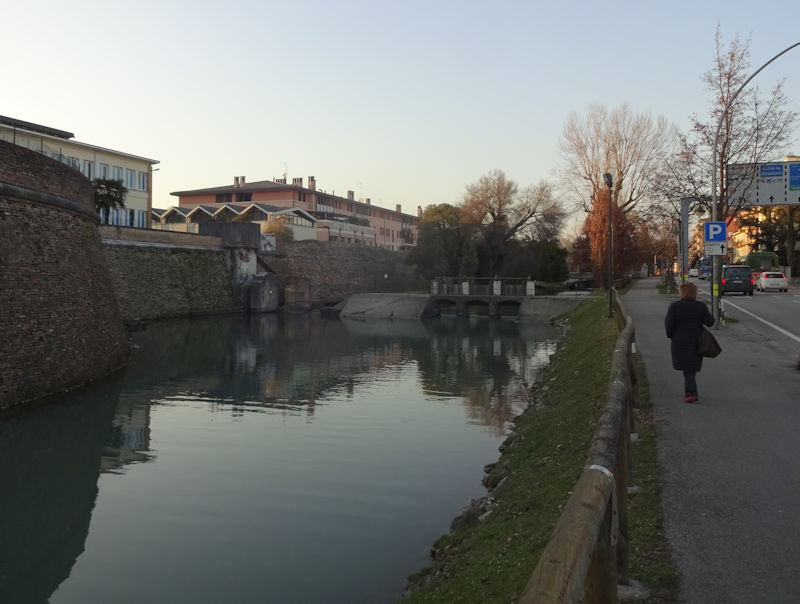
Waterworks on the Canale Botteniga around the eastern walls of the old city
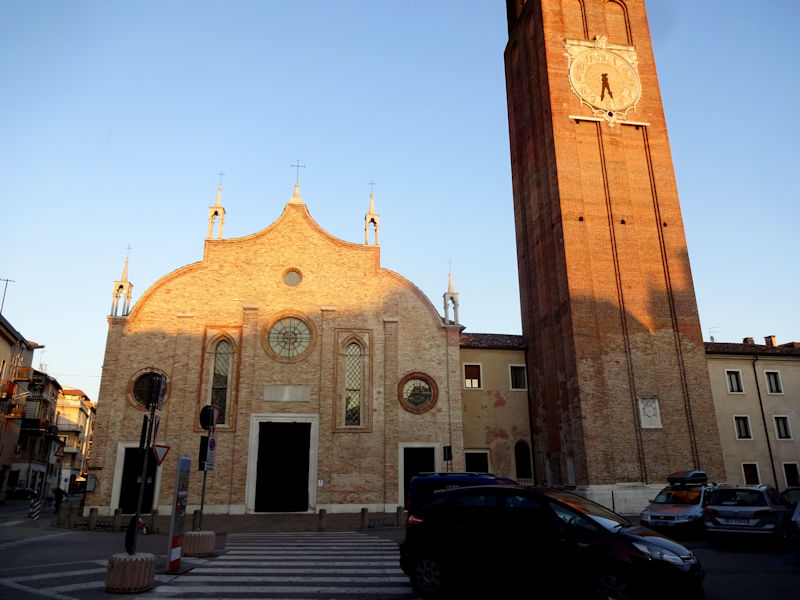
The Chiesa di Santa Maria Maggiore, just inside the eastern city wall, began in 780 as a sanctuary for a miraculous image of the Madonna, but was rebuilt in a Gothic style in 1475 and extensively restructured in the 1520s after the War of the League of Cambrai. A rose window over each of three doors. The bell tower was part of the Venetians' defensive works but after Treviso successfully withstood a siege and the war ended, in 1516 the Venetian Senate donated the tower to the church.
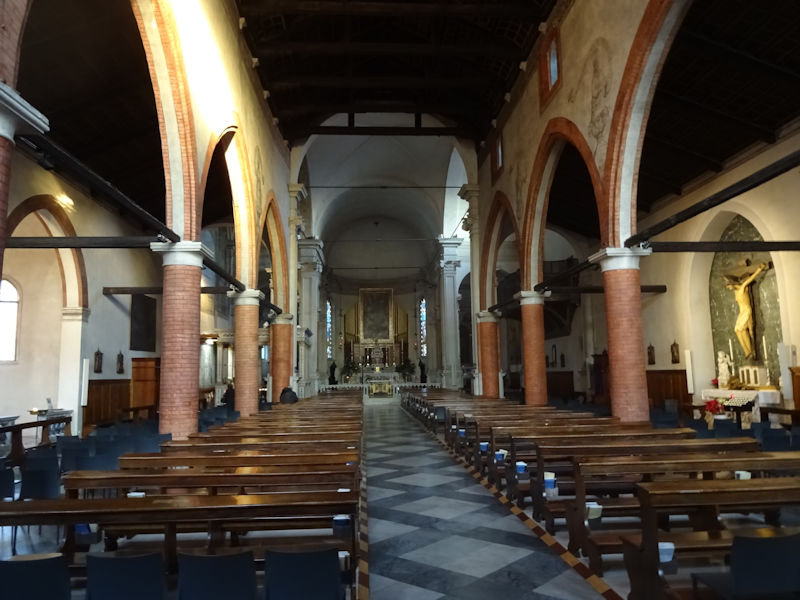
The nave, with two aisles, was badly damaged by the Allies in March 1945 but has been beautifully restored as far as possible.
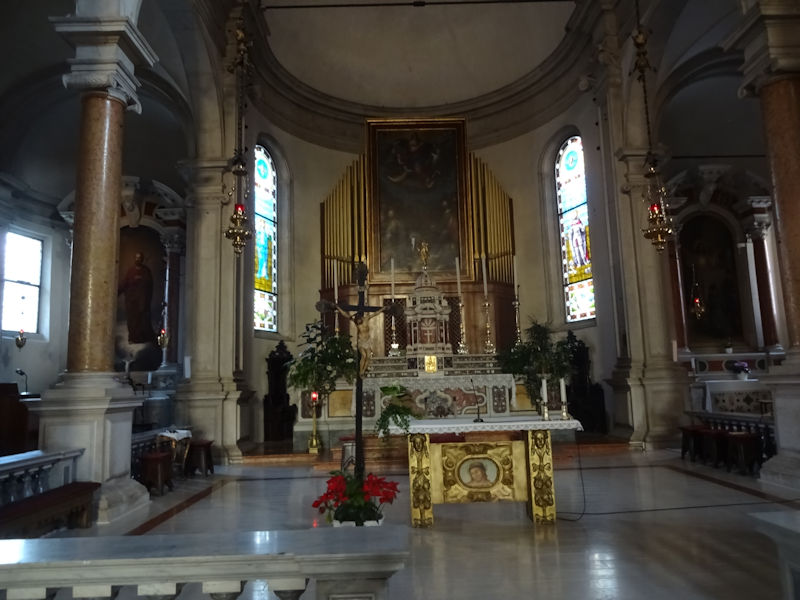
The high altar and choir
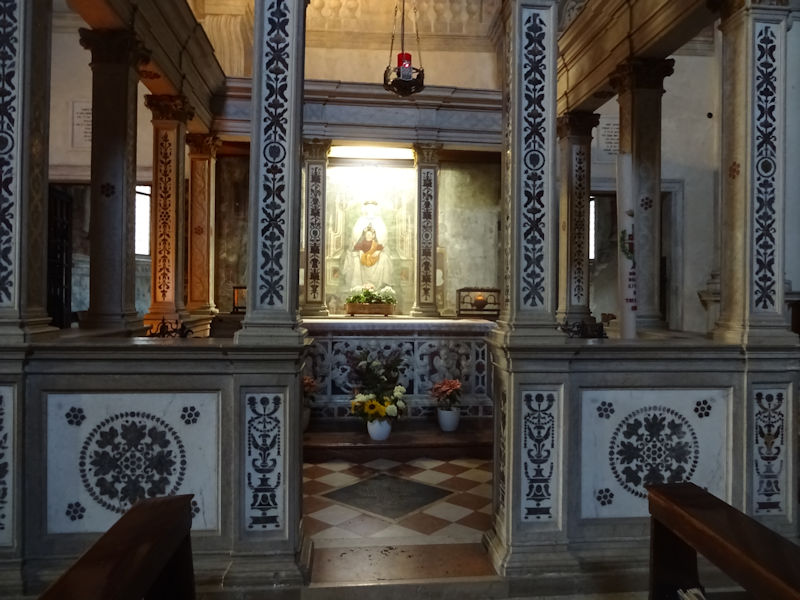
The temple of the fresco of the Madonna, within the church, and . . .
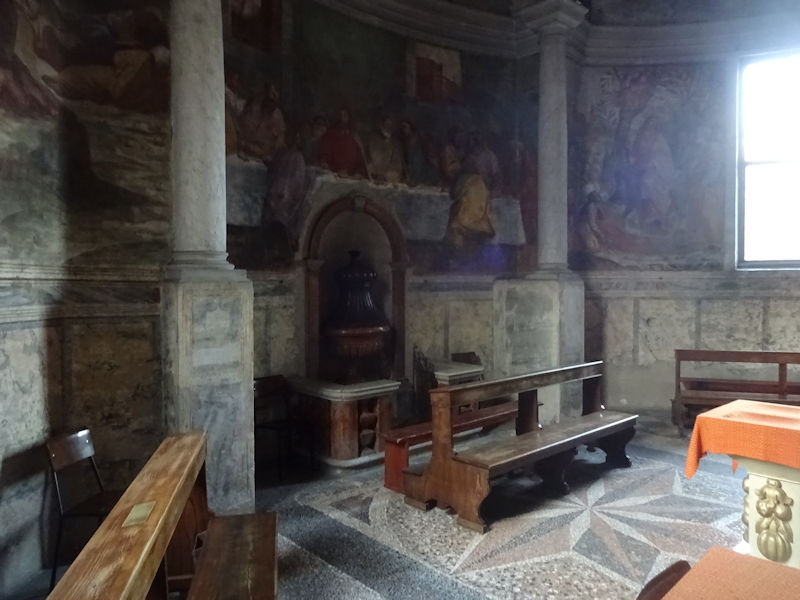
. . . a chapel tucked in behind the Madonna's temple, with two doors on it so people can march through in a line, if they want to.
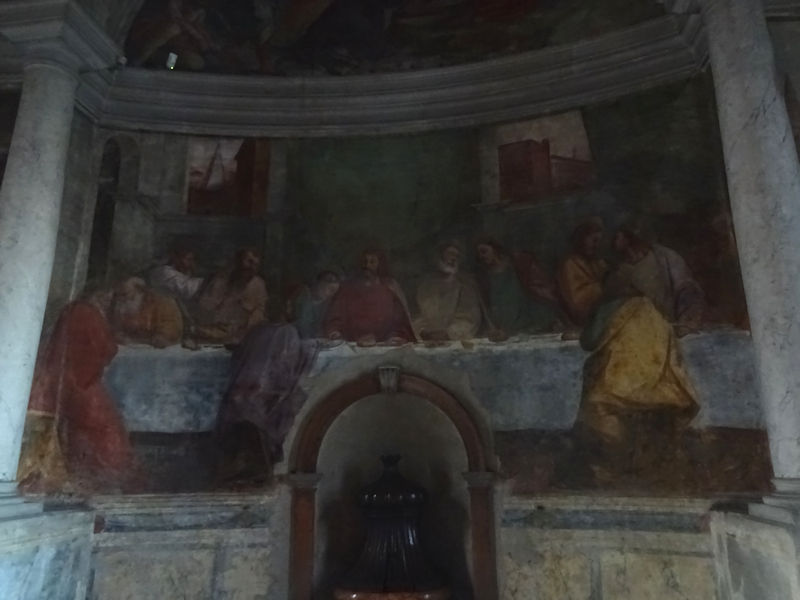
The Last Supper
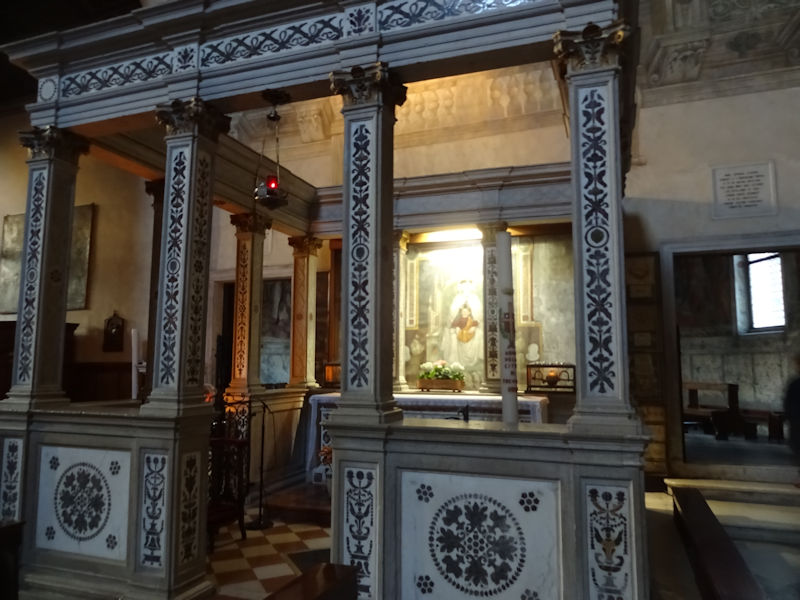
The tempietto, or sacello, or chapel if we wish, is dated to 1492, and the picture of the Madonna by Tomaso da Modena to ca. 1350.
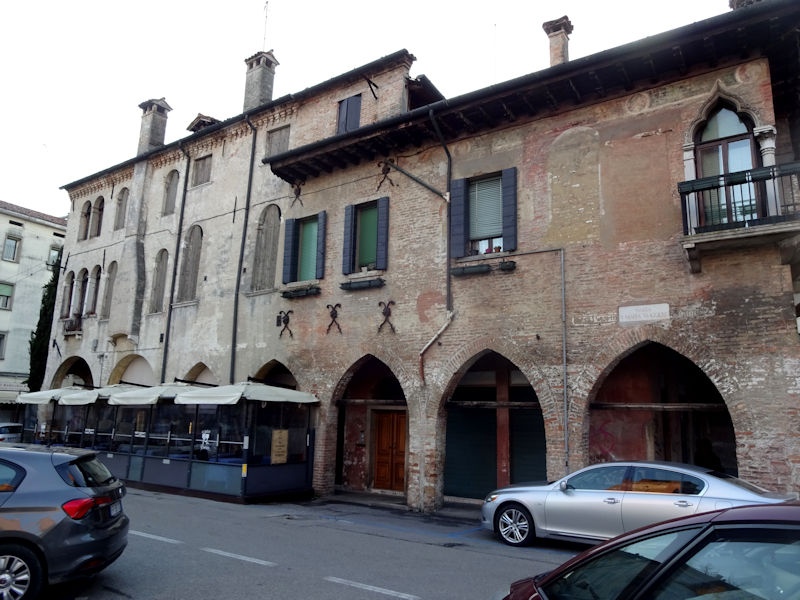
The building across the street from the Santa Maria Maggiore dates from the late 13th century.
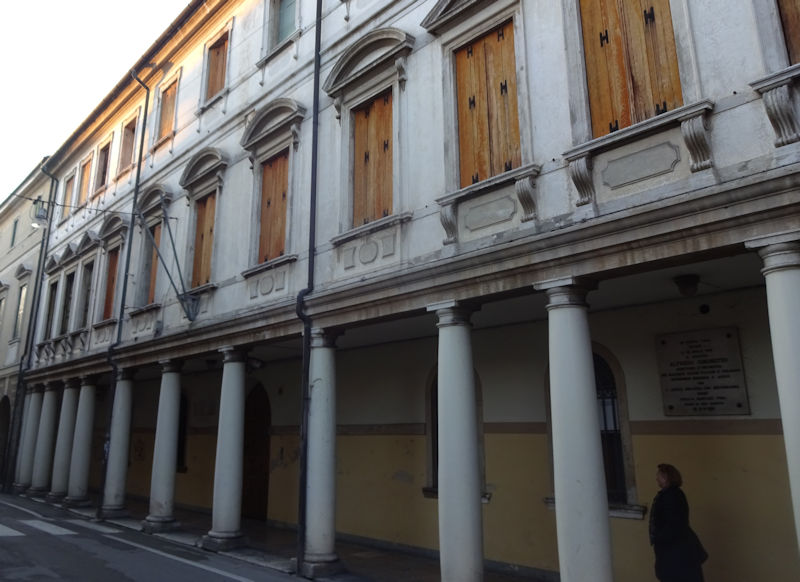
Along the Via Carlo Alberto towards the town centre

Ditto, near the Via Sant'Agata

The Grand Cagnan canal again, from the Ponte Sant'Agata

Ditto, looking north
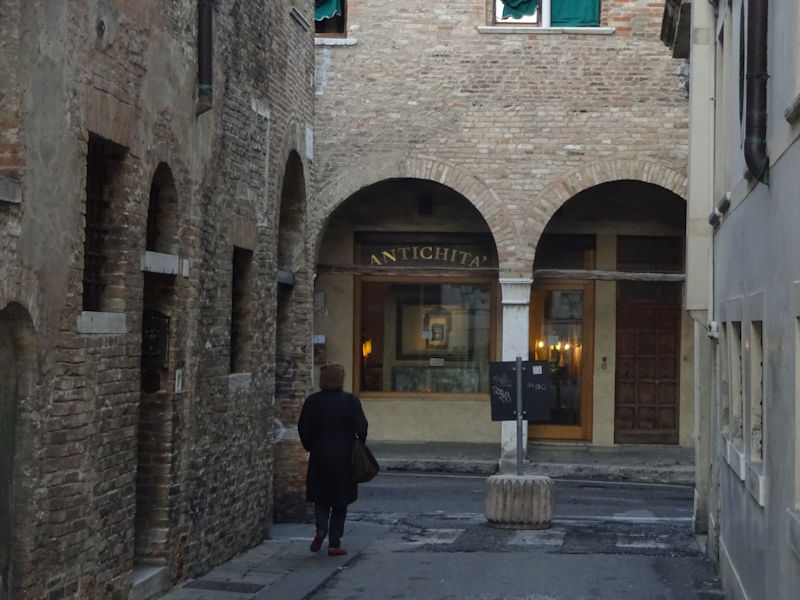
The Via Sant'Agata
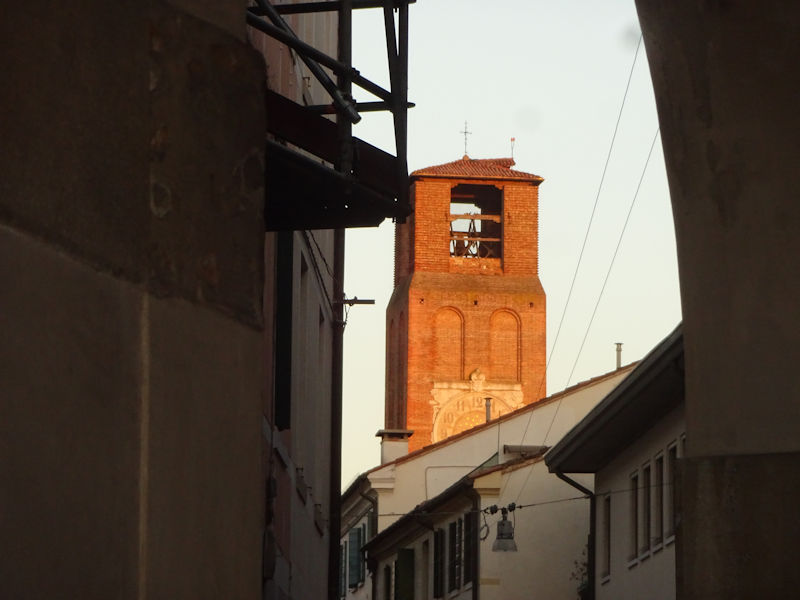
Street scene
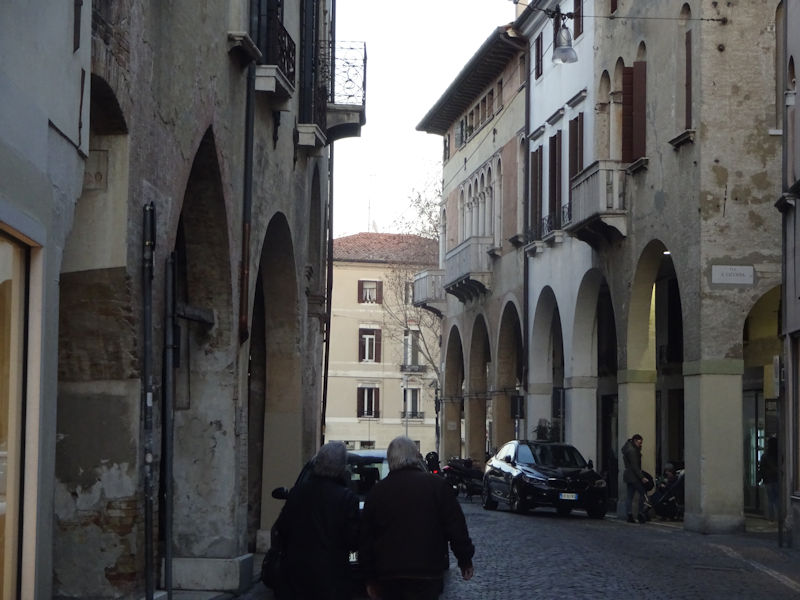
Near the Via Santa Caterina
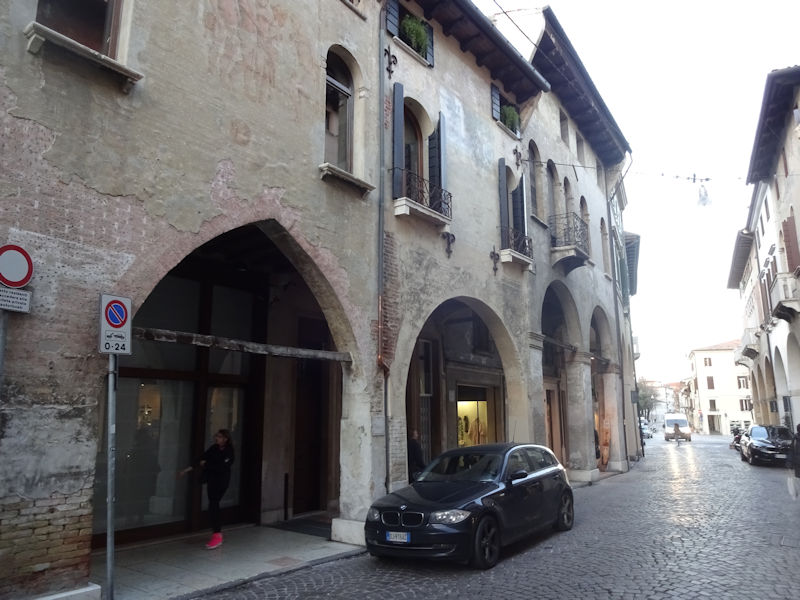

The Piazza Mateotti and back to the hotel, exhausted
Tomorrow: a day in Padua










































































